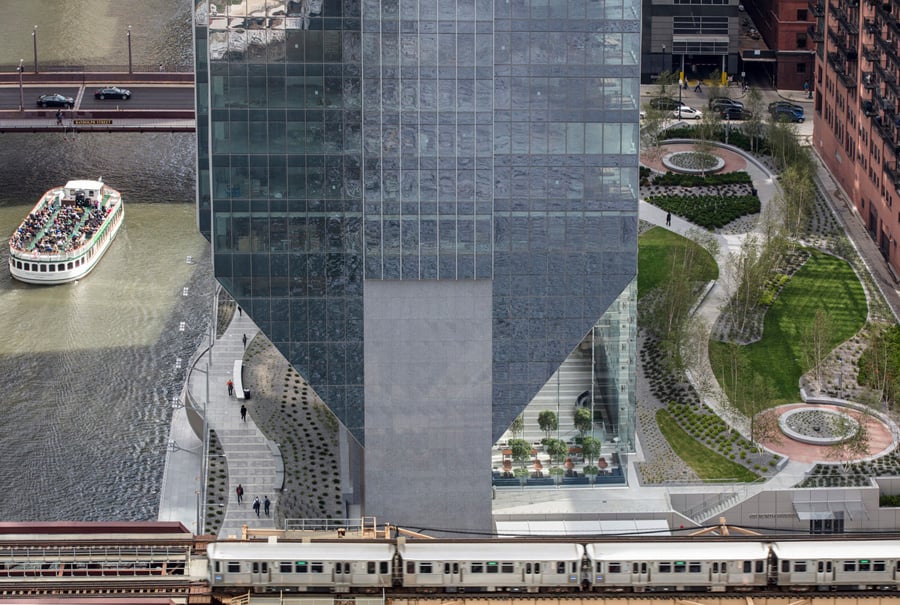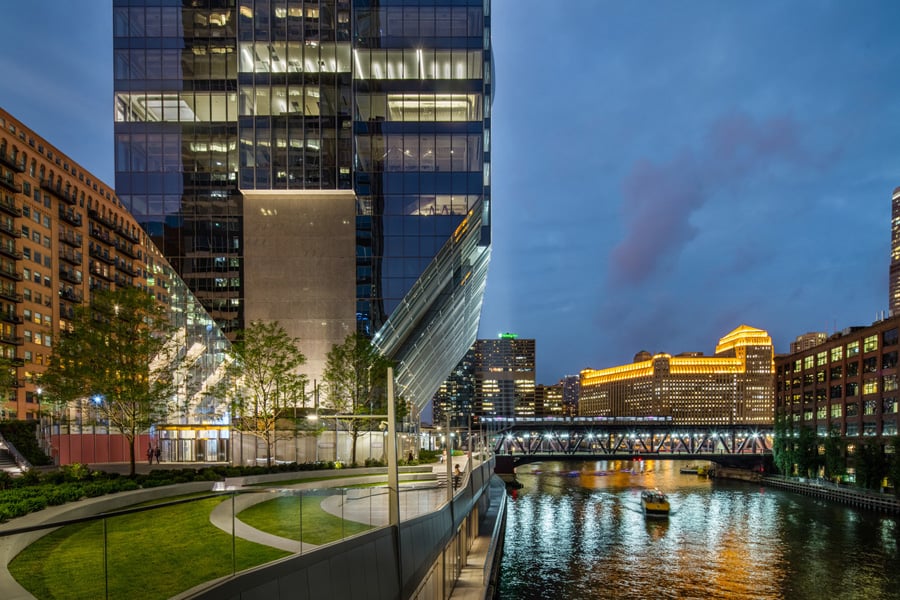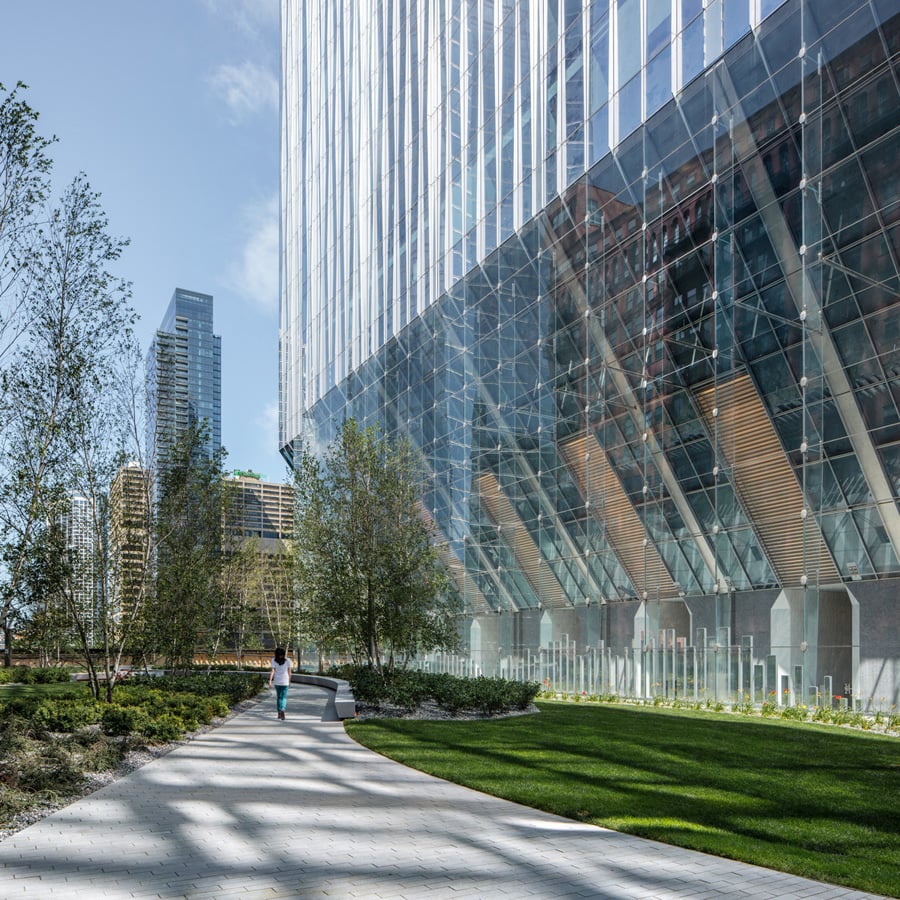
September 28, 2018
These Architects Used a Common Construction Product to Form an Undulating Urban Landscape
An office tower in Chicago is integrated with its surrounding landscape through an increasingly popular use of geofoam, a classic building product.

One Hundred Fifty North Riverside emphatically marks its place in Chicago’s skyline. Situated at a bend of the Chicago River, just across the water from the Loop, the 54-story office building is light on its feet: The bulk of its blocky mass is hoisted up on a four- story truss affixed to a concrete core, resulting in as small a footprint as possible.
The LEED Gold–certified skyscraper appears aloof to the buzzing urban activity at grade. The site is constricted to the west by a seven-line Amtrak artery, and to the north and south by a torrent of car traffic. A commuter line runs past the building, and water taxis make their rounds down below, ferrying tourists from one architectural landmark to the next. “It’s the definition of a transit-oriented design,” says Erik Harris, an associate principal at Goettsch Partners, the architects behind the project.
The landscaping at the base of the tower, by Wolff Landscape Architecture, appears to harness that energy. Plantings are arranged in radiating arcs and circles, which delineate pedestrian pathways. A one-level car garage is neatly incorporated into the landscape, but bridging the topographical differential between the lid of the garage and the street—a height of 13 feet—was a challenge. Goettsch had thought to build up the topography using slab voids, but quickly deemed it too expensive. Instead, Wolff suggested using geofoam blocks as infill, a method the firm had used elsewhere in Chicago, including at Millennium Park.
The compressive strength of geofoam, a molded polystyrene used mostly in road construction, proved an ideal solution. Moreover, its malleability—stacks of the material can be contoured on-site using a hot-wire cutter—enabled the architects to achieve a highly varied landscape, one that invites pedestrians to nestle in its bends and niches. “We’ve put a lot of people in our renderings,” says Harris, “but you walk by at lunchtime and it’s just way more than I ever thought!”
You might also like, “Clear Breakthrough: Zospeum Takes Translucent Concrete to Next Level.”












